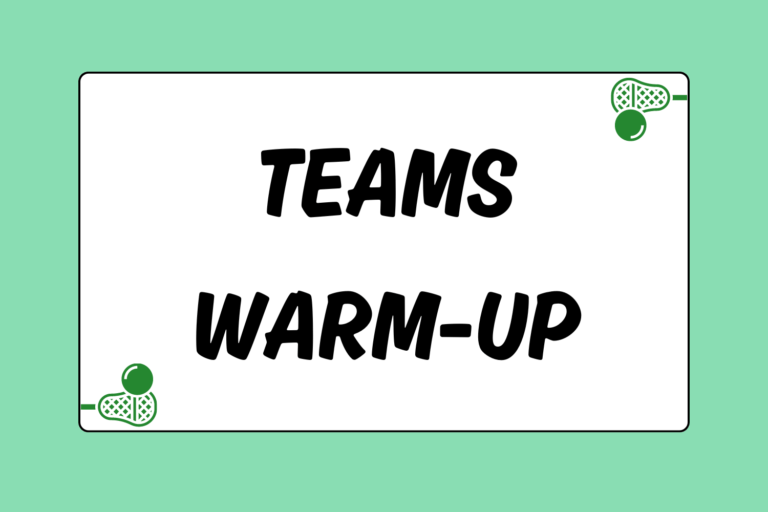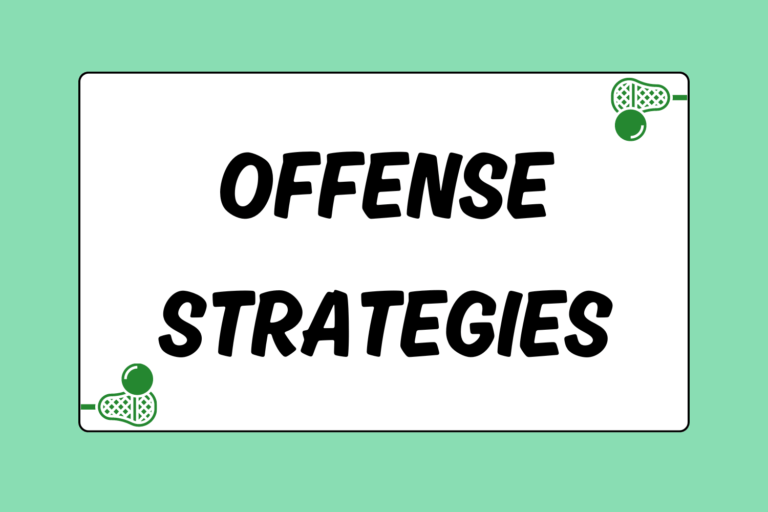Often times in youth level lacrosse, the slower or slightly overweight players wind up in goal. This is usually because the player doesn’t want to do much running or just wasn’t given a choice by his teammates or coaches. At the elite levels, though, the best goalies tend to be very athletic and surprisingly quick. By that time, they have also overcome the fear of getting hit by a 90-mile-per-hour shot and realize that those who stand between the pipes get the most playing time.
Despite the fact that the shots get harder as the level of play increases, the level of fear for goaltenders should decrease. As field players improve their shooting, they become more accurate and learn to hit open spots in the cage. It’s at the more inexperienced levels where you see players just raring back and letting shots fly with little regard as to where the ball ends up.
Generally speaking, the adrenaline that comes from making a huge save can make even the softest of keepers fired up enough to forget about the pain of taking a laser-like shot to the thigh. The best goalies make the majority of saves with their stick, anyway. They also find ways to contribute to their team’s transition offense by making crisp outlet passes or timely runs up the middle of the field following a shot and save.
Let’s take a look at the fundamentals that all goalies must master before thinking about a career in the professional ranks.
Mentality
The first thing to remember as a goalie is that lacrosse, by nature, is a high-scoring sport, and that goalie can sometimes be a very unforgiving position. Goals will be scored and sometimes there isn’t much you can do as a keeper to disrupt that fact. With that said, it is important for a goalie to stay positive when a ball gets by him, and he should focus on what the defense as a whole can do to prevent that type of goal from being scored again. In addition to stopping shots, a goalie’s job is to act as the captain of the defense and serve as the eyes and ears for those who cannot see the field as well.
To be a goalie you have to be a field general. You have to be the one who is letting people know when and where to slide, who is cutting to the cage, and when to check sticks. Take charge and be LOUD on the field. Be assertive. Even if it means getting in someone’s face once in a while to get your point across, you’ll find that the most effective way to lead your team is by being vocal. Let opponents know that they won’t be getting anything easy in there on you.
Footwork
Footwork is undoubtedly the No. 1 key to a goaltender’s success at any level of play. A goalie’s first reaction to any shot should be to move his feet towards the ball, even if he thinks the shot will travel directly into his stick. The ready position should find the goalie’s knees bent at about a 45-degree angle and with the weight on the balls of the feet and off the heels. Keeping the feet parallel and shoulder width apart allows for quick steps in any direction.
The first move by the goalie in making a save should be to step out to the ball leading with the foot on the same side of his body that the ball is travelling towards. The toes and hips of the goalie should be pointed directly at the shooter. The back foot should trail behind, with the toe slightly dragging on the turf. Once the step is taken, the toes should again be pointed in the direction of the shooter. It is almost never necessary to take more than one step at a time, as that can put a keeper far out of position for a rebound or leave huge chunks of the net visible and easily accessible should an offensive player scoop up the ball on the rebound in front of the cage. Garbage goals are a goalie’s worst enemy.
Body Position
This is another crucial element. A keeper will want to use his body to cover as much open area of the net as possible, while remaining squared to the shooter. While the knees are bent in ready position, the goalie will want his chest to be upright and his shoulders broad. The torso should face out, directly towards the shooter at all times. This is to allow for maximum coverage of the open cage.
Try to avoid bending at the waist or leaning forward, as this will especially aid the good shooters in finding space to stick one in the top shelf. “Be tall” is a command yelled to a goalie by his coach after poor upper-body positioning has led to a goal that otherwise may not have found its way into the cage. This simply serves as a reminder to the goalie to not hunch over and to keep the shoulders high and broad.
Hands and Arms
The ready position finds the goalie with his dominant hand gripping the stick at or near the top, and his non-dominant hand placed a third of the way up the shaft. Elbows should be bent at about a 90-degree angle, and the hands should be right around chest level. With proper footwork, the goalie’s hands should be guided exactly to the correct spot to make a save, and all the keeper will have to do is maintain a slightly soft grip and relax. As the feet travel out toward the shot, the goalie’s hands should move to the ball simultaneously. It is rare, though, that a keeper will catch the shot on the fly – this is where soft hands come in.
With too tight a grip on the stick, the ball will probably bounce out of the head, land somewhere on the ground in front of the keeper and allow a lingering attackman to pick up a garbage goal. With a looser grip on the stick, the keeper can pop the ball up a foot or two in the air on first impact and easily reach the stick up and snare it. These saves almost always lead to an outlet pass to streaking midfielders, and allow the goalie to offer a unique contribution to his team’s offense.
Playing Shooters in Close
A huge save from in close on an attackman alone in front of the cage can really fire a team up and give them the momentum they need to go on to a win. Since point-blank saves usually involve an attackman coming from X or the wing (due to the difficulty a midfielder would have in driving straight into the hole from up top through one or two slides), we will look at proper positioning for these situations. Remember, these players are highly skilled and can score in most of these situations. So don’t get too frustrated if you let one in from in close, as this is not healthy for you or your team.
For starters, the goalie will want to have his hip directly on the pipe nearest the shooter. This takes away any space for the shooter to sneak one in between the goalie’s leg and the pipe. In order to cut off some of the open area of the net that the shooter is able to see, the goalie’s hands and stick should be positioned a little further out from the body than normal. For as long as the ball carrier is in the immediate vicinity of the crease, the goalie can stay further out of the cage than normal in order to cut off his good looks at the open net. Should the ball carrier choose to angle his run back away from the goal, the goalie should immediately get back between the pipes and assume the ready position.
With the attackman driving around the crease from X, the goalie should take a step out toward him exactly when he gets to GLE (goal-line extended). This throws off the attackman’s timing and vision on his first chance to take a shot on goal. The goalie shouldn’t take a huge step, but a quick one with the hands up to cut off the shooter’s angle on his initial shooting opportunity. At this point, the stick should mirror that of the shooter. As long as the shooter’s hands are high, the goalie’s hands should be, too. If he drops his hands, the goalie should drop his too, keeping the stick about one to two feet in front of the shooter’s stick.
When the offensive player drives from the wing, the form is very similar, save for stepping out of the cage to cut off the angle. A player coming in from the wing has a much better look at the cage than the driver from X, and therefore the goalie should stay home and be ready for a quick shot.
Save the Day
With a good idea of who to watch and how to play, stepping in cage should be an exciting prospect. Great goalies can singlehandedly win games for their team, and also keep teammates motivated during tough times. Such an important position requires a vocal leader, so don’t be shy about making your voice heard out on the field!





